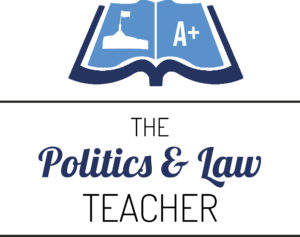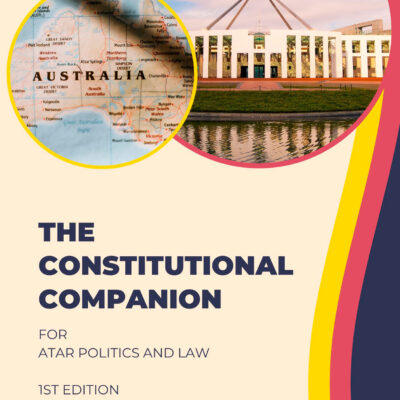5 Ways Democracies Uphold Political Representation for First Nations Peoples
“First Nations” refers to indigenous people residing within a specific territory, with “indigenous” denoting their origins “in that place”. In the High Court constitutional case, Love and Thoms 2020, “indigenous” was defined as the opposite of “alien,” signifying origin “from another place”.
Many modern democracies, including Australia, were established by “aliens” on the ancestral lands of “indigenous” First Nations. Democracy depends on the principle of representation, ensuring that the voices of all citizens are recognised and valued. This principle has profound significance for First Nations peoples worldwide due to their marginalisation following colonisation by “alien” civilisations.
Over recent decades, there has been a growing international consensus on the need to acknowledge and represent First Nations as distinct groups within now firmly established democratic societies.
First Nations possess their own “customary law,” which constitutes traditions that have evolved into rules governing political decision-making and behaviour over millennia. The presence of customary law attests to First Nations’ sovereignty, wherein they exercise self-determination and governance within their territories.
In international law, “terra nullius,” meaning ‘nobody’s land,’ was used to argue that a place lacked laws, even if inhabited. “Terra nullius” was a legal construct employed by settlers to rationalise the dispossession of First Nations peoples from their lands. Legal cases such as Australia’s landmark Mabo v Queensland (No.2) in 1992 challenged this notion. Eddie Mabo’s case dismantled the fictitious premise of “terra nullius” by acknowledging that First Nations people had established political and legal systems before their lands were colonised.
The United Nations Declaration on the Rights of Indigenous Peoples recognises the entitlement of Indigenous peoples to enjoy all human rights and freedoms.
In some countries, treaties have been forged with indigenous peoples. Treaties are legally binding agreements that delineate the terms and responsibilities of all parties involved. For instance, British settlers in New Zealand negotiated the Treaty of Waitangi with indigenous Maori nations, which forms the bedrock of modern New Zealand’s democracy and underpins Maori political representation.
There are five key ways in which democracies situated on lands historically occupied by indigenous First Nations can uphold the political representation of these communities.
Communal Representation
New Zealand
In New Zealand, special Māori seats were created to give Māori people a voice in parliament. There are seven of these seats covering the whole country. To vote in these seats, an elector must be of Māori descent.
Māori seats work like regular seats, but only Māori or people of Māori descent who enrol on a separate roll can vote for them. Alternatively, Māori people may enrol on the general electoral roll and vote in regular seats. They cannot do both.
Taiwan
Since 1972, indigenous Formosans have had special parliamentary seats to recognise their uniqueness. Two nationwide districts, one in the highlands and one in the lowlands, have had special seats since 1980. There are currently six seats, entrenched by constitutional amendment in 2005.
Delegated Self-Government
Torres Strait Regional Authority (TSRA)
The TSRA is a representative body with 20 elected board members. It operates within the Australian Department of Prime Minister and Cabinet.
The TSRA aims to improve life for Torres Strait Islanders by boosting their economy, culture, and well-being. It works with the National Indigenous Australians Agency – see below – to give these communities more control over their lives.
National Indigenous Australians Agency (NIAA)
The NIAA – created by an executive order in 2019 – operates within the Australian Department of Prime Minister and Cabinet alongside the Torres Strait Regional Authority. It manages government policies and services for Aboriginal people. It advises the Prime Minister and the Minister for Indigenous Australians on what’s most important for these communities. It does so by working with Indigenous Australians. It was created following the 2017 Uluru Statement from the Heart calling for a Voice to Parliament.
Aboriginal and Torres Strait Islander Commission (ATSIC)
ATSIC was an elected and representative body created in 1990 to oversee matters related to Indigenous Australians, including Aboriginal and Torres Strait Islander peoples. It created and ran programs for Torres Strait Islander and Aboriginal people.
ATSIC was Australia’s most representative and influential example of delegated self-government. It was established by statute and allocated a budget by the Australian Government. It operated with significantly more autonomy than either the TSRA or NIAA. However, it was dissolved by the Commonwealth Parliament in 2005 over issues related to its management.
Traditional Councils
Aboriginal Land and Sea Councils are community groups led by indigenous Elders. They are organised by geographical regions corresponding to First Nations’ lands – called “Country” – and represent the Indigenous communities living there before European settlers arrived.
They help indigenous people regain Native Title rights and manage land. They also negotiate with State Governments and corporations on behalf of First Nations.
The first Land Councils started in the Northern Territory under the Aboriginal Land Rights Act in 1976. Each state in Australia has a system for these representative bodies.
For instance, the South West Aboriginal Land and Sea Council represents the Noongar people, the traditional owners of the vast South West of Australia. The Council made a treaty-like agreement with the Western Australian State Government called the South West Native Title Settlement – the biggest one of its kind in Australia’s history and often regarded as Australia’s first treaty. It was negotiated between the Noongar people and the Western Australian Government. The “treaty” settles all native title claims over 200,000 square kilometres in Western Australia’s southwest. It is worth around $1.3 billion for this particular First Nation. The agreement officially recognises the Noongar people as the land’s traditional owners.
Indigenous Advisory Bodies
Sámediggi (Finland)
The Sámediggi is the representative body for the Sámi people in Finland. It is independent of the government. It has 21 elected members and four deputy members. It is the primary point of contact between the Finnish government and the Sámi people and ensures government decisions consider advice from traditional owners. It also advocates for land rights.
The Sámediggi assists the Sámi in preserving cultural self-determination in language, livelihood, and land rights.
Customary Senate (New Caledonia)
New Caledonia is a French province in the South Pacific – it is not a sovereign country. New Caledonia is represented in the French National Assembly as part of France. Nevertheless, it has democratic institutions with powers delegated by Paris. The 1999 Nouméa Accord was a political settlement in which Paris recognised the desire for New Caledonian and Kanak political representation and self-government.
The Customary Senate in New Caledonia represents the Melanesian Kanak people, the island’s largest indigenous group. It’s made up of representatives from eight areas of New Caledonia. Its members serve for five years and are chosen by local councils representing traditional customs. Government authorities must ask the Senate for advice on Kanak identity, customs, and society.
One of the most noteworthy aspects of the Customary Senate is that it shows a First Nations advisory body doesn’t harm democracy or the rule of law.
Vanuatu and Fiji
Vanuatu’s Malvatumauri and Fiji’s Council of Chiefs are similar to New Caledonia’s Customary Senate.
The Malvatumauri is closest to the proposed Australian Voice to Parliament because it is enshrined in Vanuatu’s constitution.
Australian First Nations Voice to Parliament
Australia’s First Nations offered the Voice to Parliament as a fundamental part of a new relationship between indigenous and non-indigenous Australians. The Voice would be a federal advisory body comprising Aboriginal and Torres Strait Islander people. It aims to represent the views of Indigenous communities on matters relating to them.
The critical aspects of the proposed Voice to Parliament are:
- Constitutional Change: The Voice to Parliament would lead to a change in the Australian Constitution. Electors must approve this by a “double majority” referendum. The reason for constitutional entrenchment is to protect the Voice from being abolished like ATSIC was in 2005.
- Representation: The Voice would provide permanent representation and recognition for Aboriginal and Torres Strait Islander peoples in the Constitution. It would be a body representing First Nations people across Australia, providing their input into federal government decisions, policies, and laws affecting their lives.
- Advisory Role: The Voice would serve as an advisory body. It would not have the power to overrule parliament or the executive government.
- Structure and processes: The Voice’s structure and processes would not be codified in the Constitution. Instead, they would depend on legislation passed after a successful referendum. The Voice would comprise Local and Regional Voices and a National Voice.
- Referendum: The question for the referendum is: “A Proposed Law: To alter the Constitution to recognise the First Peoples of Australia by establishing an Aboriginal and Torres Strait Islander Voice. Do you approve this proposed alteration?”. Parliament will design the Voice via legislation if the vote is successful.
The Voice proposal is part of a decades-long reconciliation process. The Voice idea originates from the 2017 First Nations’ National Constitutional Convention. Approximately 250 indigenous Convention delegates met at Uluru and, after discussions, reached a consensus on a 440-word statement, now known as the Uluru Statement from the Heart, in which the Voice was proposed. Such Conventions and Statements are also a form of political representation – albeit impermanent and too specific to represent the breadth of First Nations issues on an ongoing basis.
The Voice is similar to the Finnish Sámediggi and Kanak Customary Senate. It would replace the TSRA and the NIAA, both weak forms of delegated self-government that replaced the more influential ATSIC. The problem with the TSRA, NIAA and ATSIC is their vulnerability to the whims of governments and Parliaments – which can abolish them at will.
Respecting International Law
Democracies balance majority rule with respect for rights – which is especially important to protect minorities – like First Nations – from a “tyranny of the majority”. A significant source of human rights is international law originating from the United Nations. Several international laws relate to First Nations’ political representation and self-determination. They are:
- The International Covenant on Civil and Political Rights – Article 1 emphasises the right of all peoples, including First Nations, to self-determination.
- The International Covenant on Economic, Social and Cultural Rights recognises indigenous economic, social, and cultural development rights.
- The United Nations Declaration on the Rights of Indigenous Peoples advocates for indigenous self-governance, cultural preservation, and land rights.
- The International Labour Convention on the Rights of Indigenous and Tribal Peoples in Independent Countries No. 169 outlines essential protections for Indigenous rights.
A democracy should aim to protect these rights. Ratifying human rights conventions and implementing them in domestic statutes – as Australia does for the most part – is a significant indicator of whether or not a political and legal system adequately protects human rights.


